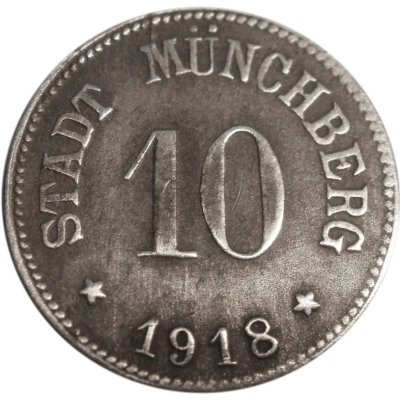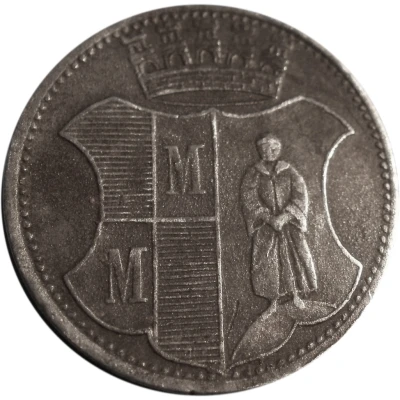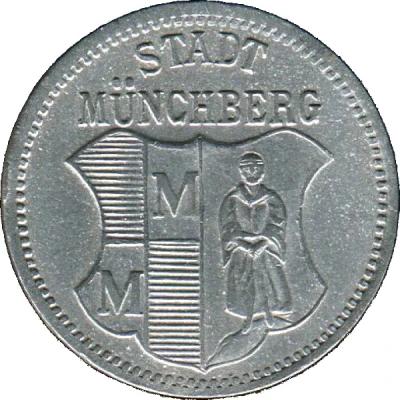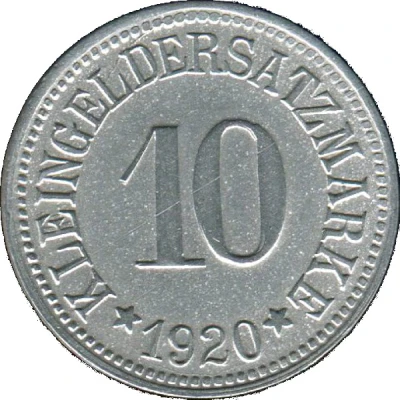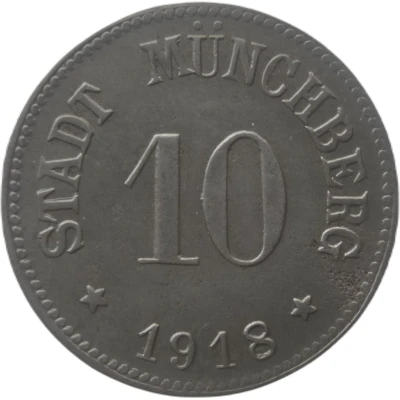
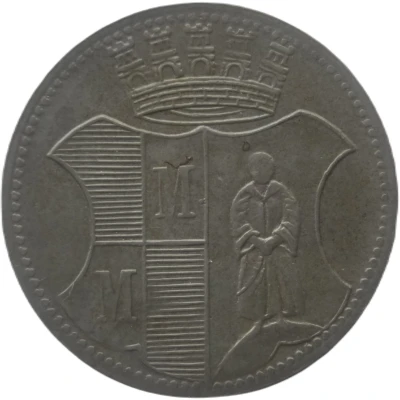

© Willem63 (CC BY-NC-SA)
10 Pfennigs - Münchberg
1918 year| Iron | 2.9 g | 22.3 mm |
| Issuer | City of Münchberg (Federal state of Bavaria) |
|---|---|
| Type | Standard circulation coin |
| Year | 1918 |
| Value | 10 Pfennigs (10 Pfennige) (0.10) |
| Currency | Mark (1914-1924) |
| Composition | Iron |
| Weight | 2.9 g |
| Diameter | 22.3 mm |
| Thickness | 1.1 mm |
| Shape | Round |
| Technique | Milled |
| Orientation | Medal alignment ↑↑ |
| Demonetized | Yes |
| Updated | 2024-10-04 |
| Numista | N#143157 |
|---|---|
| Rarity index | 84% |
Reverse
Pearl rim surrounding Coat of Arms
Script: Latin
Edge
Plain
Comment
Issuing body: [Stadt, Bayern].Interesting fact
The 10 Pfennigs - Münchberg 1918 coin was minted during a time of economic turmoil in Germany, known as the "Inflationary Period" (1914-1923). During this time, the value of the German mark (the national currency) plummeted, and prices for everyday goods skyrocketed. As a result, many Germans turned to alternative forms of currency, such as local emergency currencies like the 10 Pfennigs - Münchberg 1918 coin. This coin, made of iron and weighing 2.9 grams, was issued by the City of Münchberg in Bavaria and was used as a substitute for the rapidly devaluing national currency. Despite its humble appearance, this coin is a fascinating piece of history that highlights the economic challenges faced by Germany during World War I and the subsequent inflationary period.
